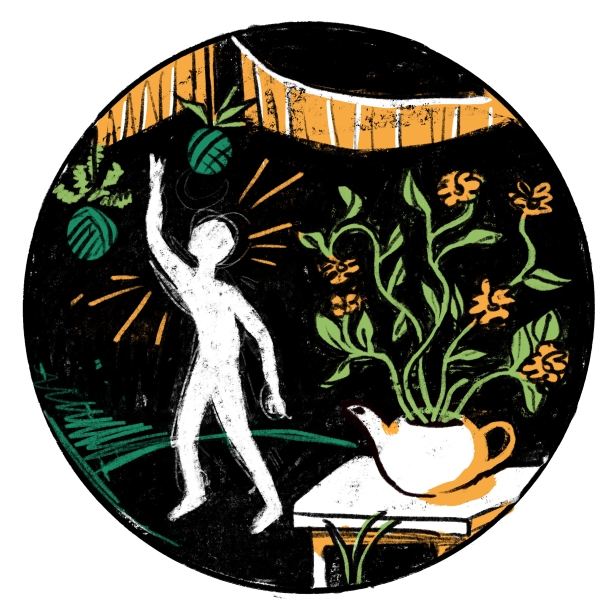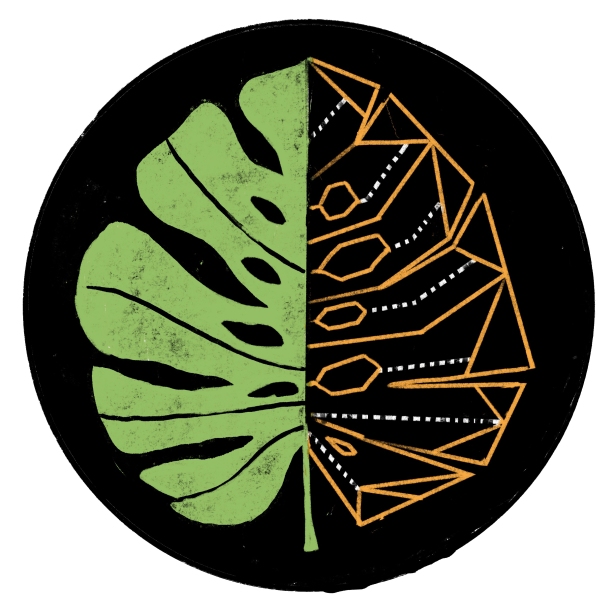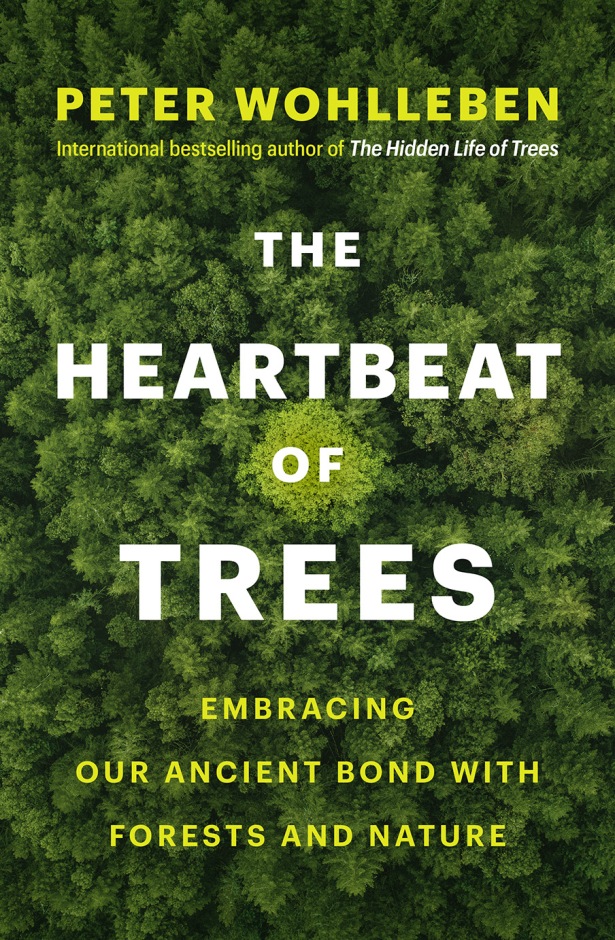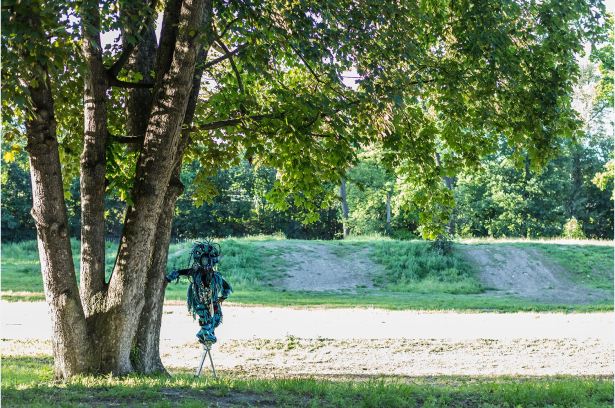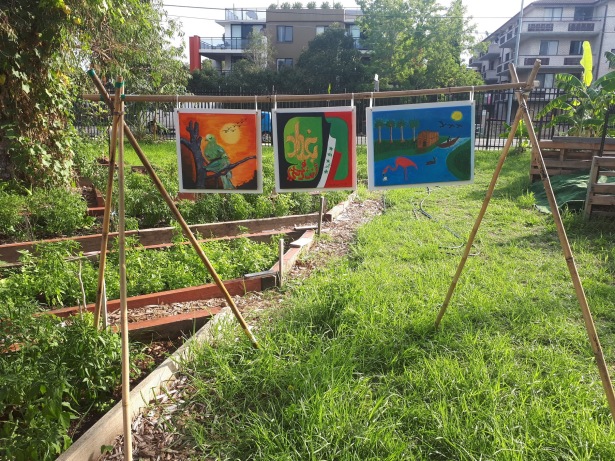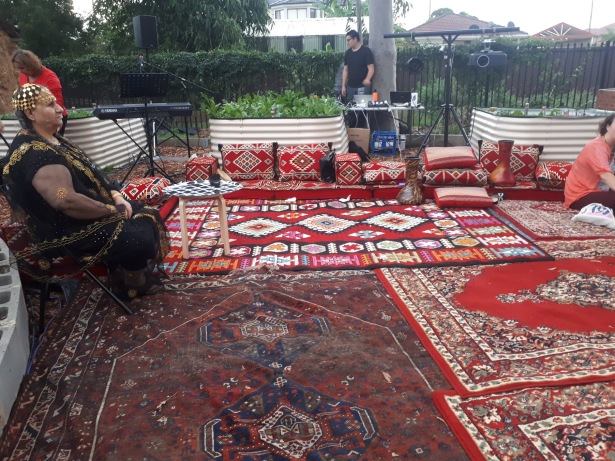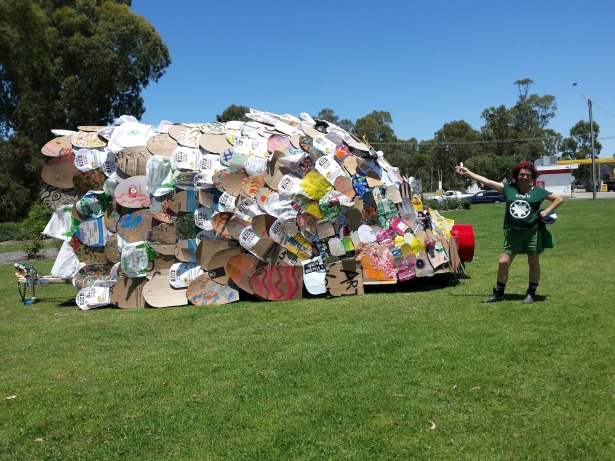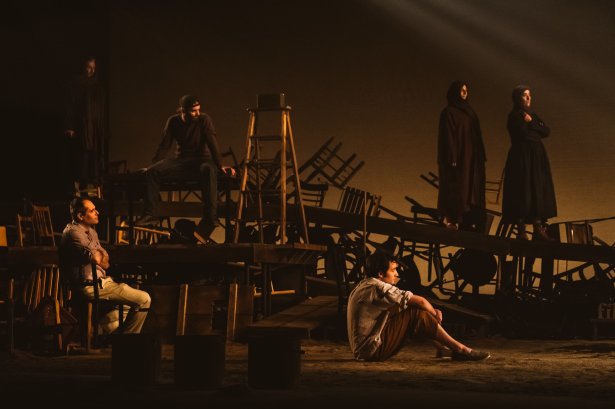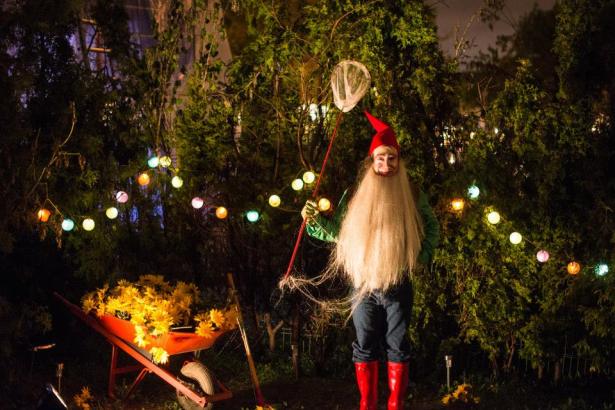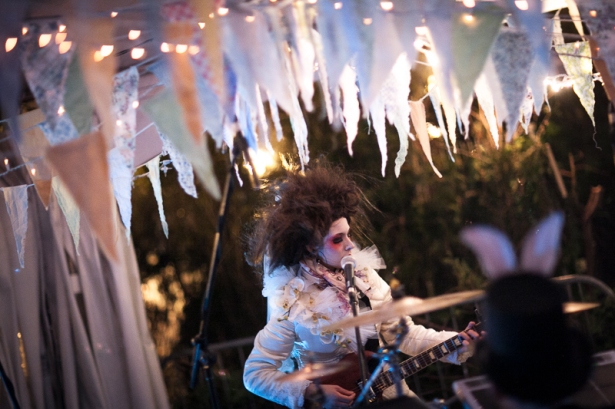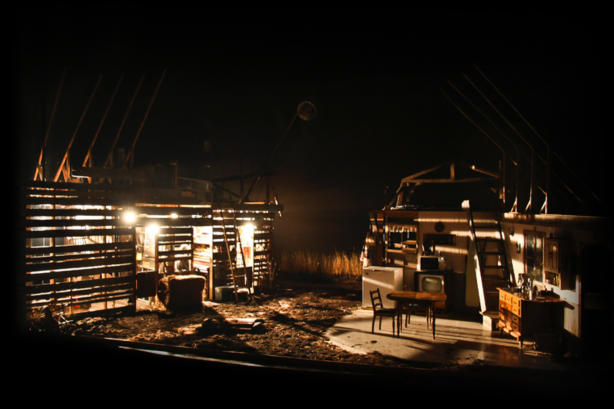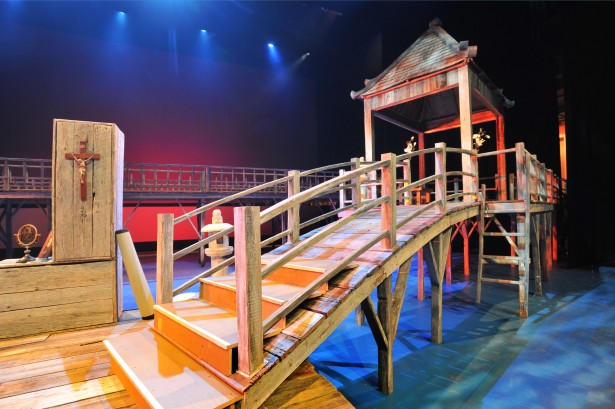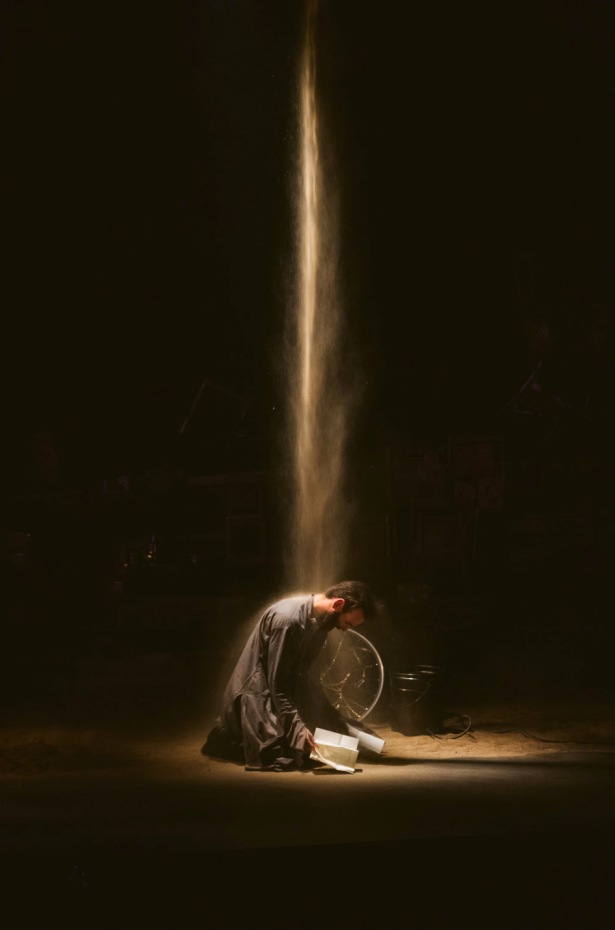From ecoscenography
BY TANJABEER
In 2023, the National Institute of Dramatic Art (NIDA) contracted Performance + Ecology Research Lab (P+ERL) at the Creative Arts Research Insitute, Griffith University to work with NIDA Course Leaders to embed environmental sustainability knowledge and skills in all NIDA degree programs (BFA, MFA and VET). The project aims to equip new generations of industry practitioners with the sustainability skills and practices to create positive change in their future workplaces across Australia and around the world. Alexandra Lord participated in the project, contributing her skills as a designer for film, theatre and events.
Alexandra is a member of the Director’s Guild of Canada Ontario Art Department and the IATSE 873 Toronto Costume Department. She is currently working as a Trainee Assistant Art Director on the upcoming CBS Star Trek film, Section 31. Tanja Beer (co-director of P+ERL) conducted this interview.
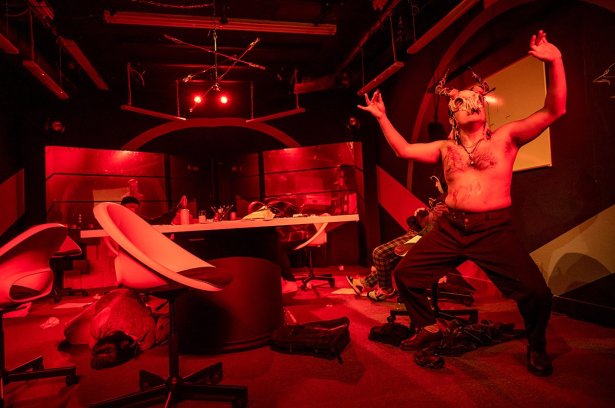
How did your interest in Ecoscenography and sustainable theatre and film production begin?
My interest in Ecoscenography and sustainable theatre and film production started while I was training at The National Theatre School of Canada. I became interested in the creative reuse of materials and climate positive conceptualization as an instinctual response to the world around me. It was a natural evolution of the development of my creative vision that I continued to clarify as I completed my young artist training as a member of the Soulpepper Academy, a full-time, paid theatre training program at Soulpepper Theatre in Toronto, Canada. Alongside fellow graduates of this program I co-founded Triga Creative, a sustainably-minded design collective. I am now further refining my sustainability practice through my current transition into film and television.
What does Ecoscenography mean to you?
Ecoscenography for me is rooted in the etymological breakdown of the term. ‘Eco’ meaning to not harm the environment and ‘scenography’ meaning the design of theatrical space. For me, these two terms combined mean leaving the lightest footprint possible through design, not only for built environments but also for the design for bodies moving through theatrical space. I have personally extended this definition from the stage to include design for society as well as on screen. Ecoscenography is a way to apply climate positive future visioning. Whether designing for live events, theatre or film, I am always working towards ‘make-believing’ the world I want to live in. I collaborate with my colleagues with this shared intention and extend the agency of change making by encouraging my audiences to imagine a better world we can all live in.
What does it mean to bring sustainability into film production?
It means the world to me to bring sustainability into film production because I believe that the medium of film has the power to reach such incredibly large audiences around the globe. The ability to spread the message of ecoscenography through sustainable film production and conception at such an extensive scope and scale really excites me.
What are the challenges and opportunities of pursuing sustainability in film production?
The main challenge of pursuing sustainability in film production is that if positive impact is not the priority of the top executive producers the negative impact of the production can be huge. A recent audit completed by Angelica Siegel for Cream Productions reports 70 bags of waste from just 1 week on set. If waste is properly sorted into the three streams of recycling, compost and waste, you can divert around 80% as Angelica was able to successfully accomplish with Cream Productions, as part of their first Carbon Neutral Season in 2021. You can read more about this sustainable production initiative here.
As you can see through Angelica’s work with Cream Productions the opportunity to make substantial positive impact is just as equally possible. The possibility of a whole production company being motivated by eco-consciousness can result in an incredible reduction in waste and emissions. When powerful stakeholders are invested in this kind of climate action it sets an incredible example of what best practices can be applied to our lives beyond the screen.
How does screen differ from theatre?
Film being well-financed and widely influential is one of the main differences for me compared to my work in sustainability in theatre on smaller productions with fewer audience members. I feel that it is possible to integrate ecoscenography into my personal design process no matter what the position of my colleagues in theatre, but I don’t always feel like I am making substantial change outside of my own personal design efforts. In film, I have had experiences of the increased tangible impact that can be made by a unified commitment across a production for change and been able to witness the remarkable positive impact that just one of these productions has had that greatly outweighs the work that I have been able to accomplish in all of my theatre projects combined.
Can you tell me about a few of your sustainability projects in screen?
One such climate positive experience was on FXs Y: The Last Man. This American production filmed in Toronto, Canada in 2021 had a whole Sustainability Department dedicated to facilitating the sustainable collaboration of all departments across the entire production. The 10 episode show was able to reduce its environmental impacts by diverting most of its waste from landfill, donating over 6,000 meals to local communities, and replacing many of its diesel generators with emission-free battery electric generators. You can check out our collective best efforts here. I was a costume assistant on this production and was thrilled to be part of a department that prioritized sourcing costumes from second hand retailers as much as possible. We also gave these costumes additional life by donating them to Toronto theatre companies. I directly benefited from the donation of some of these costumes to Coal Mine Theatre, reusing as many of these pieces as possible in my design of the costumes for their production of The Antipodes in 2022. Here are some photos of my costumes for The Antipodes which included the reuse of the main character’s main shirt from Y: The Last Man.
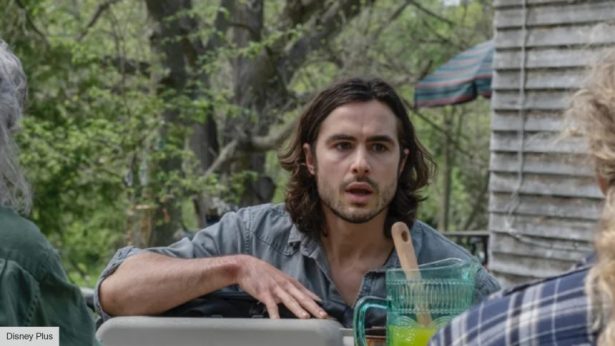
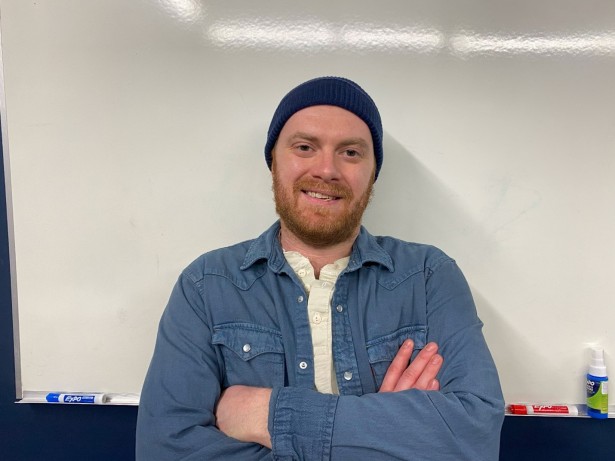
How did you bring an ecological ethic to the work?
I was so excited that my first film contract was a production that prioritized an ecological ethic. There is a lot of waste intrinsic to the way that costuming operates in film in addition to excessive textile consumption. This includes the use of plastic hangers and plastic garment bags. With the Costume Supervisor, we sourced as many of these items as we could from previous productions and then ensured that our stock was donated to another costume department after we wrapped. The Sustainability Department was essential in supporting us in taking on the additional labour it took to secure these donations.
What were some of the biggest hurdles that you have had to tackle in film production?
I believe that this is the biggest hurdle to tackling sustainability in general, the extra labour it takes on top of the incredible degree of labour already involved in design, for film or otherwise. Even through film production can tend to have bigger budgets than theatre that doesn’t mean that those budgets aren’t kept as tight as possible. Having the investment of a Sustainability Department on Y: The Last Man meant that there were resources set aside for supporting every department to do their best work in the most sustainable way possible without adding more to their already demanding jobs.
What are you most proud of?
I am most proud of taking an active role on a sustainable production. The informed requests of departmental members are what the Sustainability Department relies on in order to best facilitate positive change across all departments on a production. It took the participation of all crew members to create such a successful experience for all.
What tips would you give to a production designer/ art director/ production assistant who is exploring sustainable practice for the first time?
This is exactly my tip no matter whether you are the head of the department or in an entry level position. Your creative experience contains all the answers to the questions of how we can be better as a whole. Don’t be afraid to ask for what you need to be as sustainable as possible and contribute to collectively imagining and practicing new solutions. Every little bit does help and the more people who try their best the better we all will be. Introduce yourself as someone who is sustainably minded and connect with like-minded colleagues as soon as possible.
How would you encourage young designers and makers to pursue sustainability in their practice?
Start right away in exploring and experimenting with sustainability as integral to the development of your unique creative process. The more natural it feels to apply sustainability to your work the easier it will be to lead with this vision as you advance in your career and the more you will build a reputation for aesthetics aligned with positive climate impact. Don’t be afraid of asking questions and proposing new ways of doing things no matter what stage you are at. We are all in this together and if we are to share a climate positive future we are all going to have to make adjustments as we all learn how to do things differently.
What does the future of sustainability in film look like?
The future of sustainability in film looks very bright to me. I am encouraged to learn how many colleagues I have in every area and level of production who hold sustainable values and how excellence in ecoscenography is starting to be acknowledged. There is so much opportunity to connect through this shared vision and tell impactful stories of a happy and healthy planet through this industry. I for one feel emboldened through knowing how much good can be done when a crew comes together with an ecological ethic and I believe that this messaging will reach audiences far and wide.
How have you framed/promoted yourself as an individual contractor with a focus on sustainability? What has been the response by cultural organisations to this?
I have added a sustainable design statement in the introductory heading of my CV and include all of my sustainability training and professional experience as part of my list of skills. I know for a fact that this has set me apart from other job applicants and that sustainable applications of design have been offered to me because I have framed my skills in this way. I also promote this extension of my design work on my website and have been invited as a guest speaker at design conferences specifically because of this.
Have you observed any shifts in the industry when it comes to individual contractors who explicitly state sustainability in their personal branding/CVs?
I have noticed a shift in the industry which demands a need for sustainable approaches applied to all aspects of production and I think the more individual contractors who can self-identify in this way the more successful department heads can be in selecting crew members who are aligned with a climate positive approach. I envision a future in which ecoscenographers can pitch sustainable designs to directors and producers in such an aesthetically enticing and budget savvy way that explicitly stating sustainability in personal branding becomes a necessity at all levels of hiring
Powered by WPeMatico







